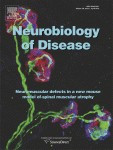Lahtinen L, Ndode-Ekane XE, Barinka F, Akamine Y, Esmaeili MH, Rantala J, Pitkänen A. Neurobiol Dis. 2010 Mar;37(3):692–703. Epub 2009 Dec 21. IF: 4.852

Abstract:
Expression of urokinase-type plasminogen activator (uPA) is increased after brain injury, suggesting that, like in cancer tissue, uPA plays roles in brain remodeling. Here we injured brain with intrahippocampal kainic acid (KA) injection in adult Wt and uPA–/– mice. At 20 days post-injury, uPA–/– mice had more severe loss of contralateral pyramidal (p < 0.05) and hilar neurons (p < 0.05) than Wt mice. The number of doublecortin (DCX)-positive newly born neurons was also reduced in uPA–/– mice as compared to Wt (p < 0.01). No difference was observed in granule cell dispersion or distribution of DCX-positive neurons in the dentate gyrus. uPA deficiency did not affect the total length of hippocampal blood vessels or vessel density. No differences were observed in the severity of status epilepticus or consequent epilepsy between the genotypes. These data indicate that uPA deficiency can unfavorably modulate both delayed neurodegeneration and neurogenesis but has little effect on post-injury neuronal migration and vascular density. Our results favor the idea that elevated uPA during the post-injury phase is neuroprotective.
-az-
